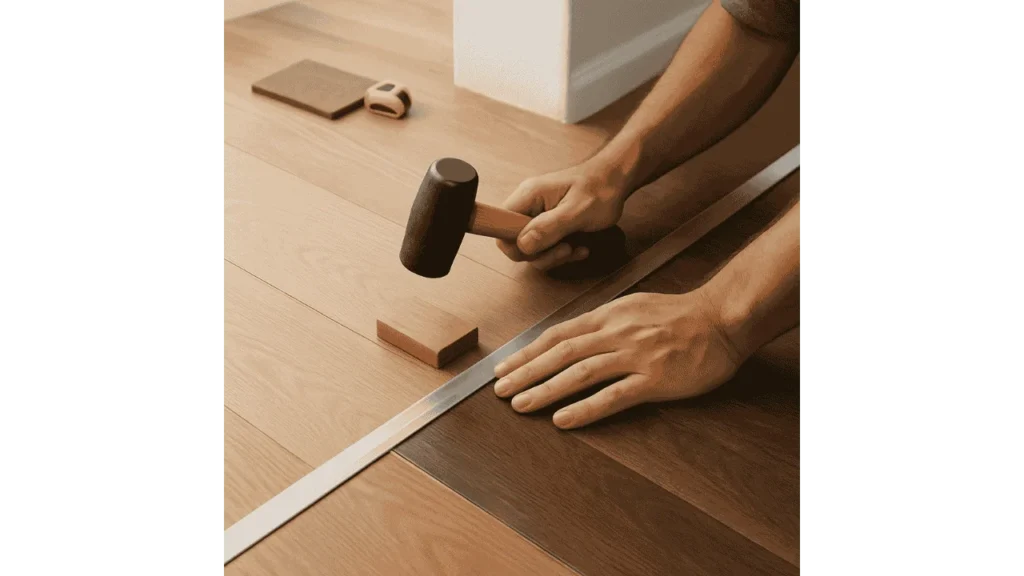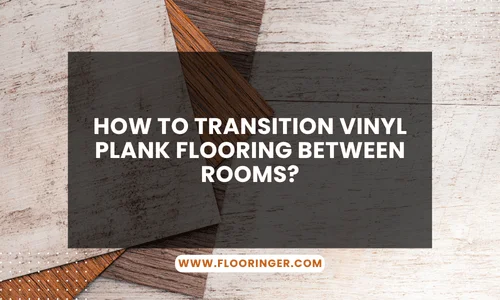Transitions between rooms are more than just a finishing touch; they’re essential to maintaining your floor’s structure and design flow. As someone who’s installed dozens of vinyl plank floors, I can tell you firsthand: poor transitions often lead to shifting planks, squeaks, or wear lines. The key to doing it right? Use the right technique based on room layout, flooring height, and direction.
“Proper transition strips aren’t just aesthetic; they’re engineered to absorb expansion and prevent premature damage.” — Carlos Mendez, Flooring Specialist at BuildSmart Interiors

What Are Flooring Transitions and Why Do They Matter?
Flooring transitions are the materials that bridge two surfaces; especially where floors meet in doorways, change direction, or shift height. They’re crucial to protecting plank edges, allowing natural movement, and maintaining a clean finish.
If you skip them or choose the wrong type, planks can pull apart, curl up, or create a tripping hazard over time. In homes with open plans or different flooring materials between rooms, transitions also help visually define spaces without hard breaks.
What Are the Best Methods for Seamless Vinyl Flooring Transitions?
Should You Use T-Molding for Rooms With Same-Level Flooring?
Absolutely. T-molding is perfect when your vinyl planks continue into another room at the same height. It fits into a slim metal track installed in the subfloor and sits snugly between the flooring edges. This maintains expansion space while looking seamless.
What If Flooring Height Changes Between Rooms?
In that case, a reducer strip is what you need. It gently slopes between the higher vinyl plank flooring and the lower surface; often tile, laminate, or concrete. This reduces the trip hazard while maintaining clean aesthetics.
Can You Align Planks Through Doorways?
Yes, and you should when possible. Aligning planks to flow in the same direction between connected rooms creates a more expansive and intentional look. Just make sure to plan this during your layout phase.
“Continuous plank alignment makes smaller homes feel bigger. The visual line guides the eye across rooms without disruption.” — Sarah Pyle, Certified Interior Remodeler at HomeFlow Concepts
Read More: How to Remove Vinyl Plank Flooring Without Damaging It?
What Should You Use Near Sliding Doors?
Where vinyl ends at sliding doors, an end cap (or square nose molding) works best. It caps off the flooring edge without blocking the door track and allows space for natural expansion.
Is an Expansion Gap Necessary Under Transitions?
Always. Whether using a T-molding, reducer, or end cap, make sure there’s at least a 1/4-inch expansion gap beneath. Vinyl planks expand and contract with humidity changes, and tight installations can lead to buckling.
How Do You Match Moldings to Vinyl Flooring?
Manufacturers often make moldings to match specific flooring lines, so check if your vinyl plank brand offers compatible accessories. Matching color, texture, and finish ensures a unified, polished look.
How Precise Should Plank Cuts Be at Transitions?
Very. Clean, tight cuts around doorway trims and moldings prevent gaps and lift. Use a sharp utility knife or miter saw for crisp edges, and always dry-fit before securing.
What’s the Best Way to Secure Transition Strips?
Depending on the type, either use adhesive, screws, or a metal track system. T-moldings often use tracks, while reducers might be glued or screwed in. Follow the product guidelines for stability.
Should You Plan Transitions Before Installation?
Definitely. During your initial layout, mark where transitions will go. This helps determine plank direction, minimize cuts, and avoid awkward joints later on.
What Works Best for Transitioning to Carpet?
Use a threshold molding or carpet reducer. It creates a soft edge where vinyl meets carpet, preventing fraying and making the step between surfaces more comfortable.
Final Takeaways
Transitioning vinyl plank flooring between rooms is about more than appearance; it’s about functionality, durability, and flow. From T-moldings to reducers, each tool plays a role in maintaining your floor’s integrity over time. Plan your transitions carefully, match your materials, and always leave room for expansion. When done right, transitions will quietly do their job while your floors shine effortlessly room to room.
